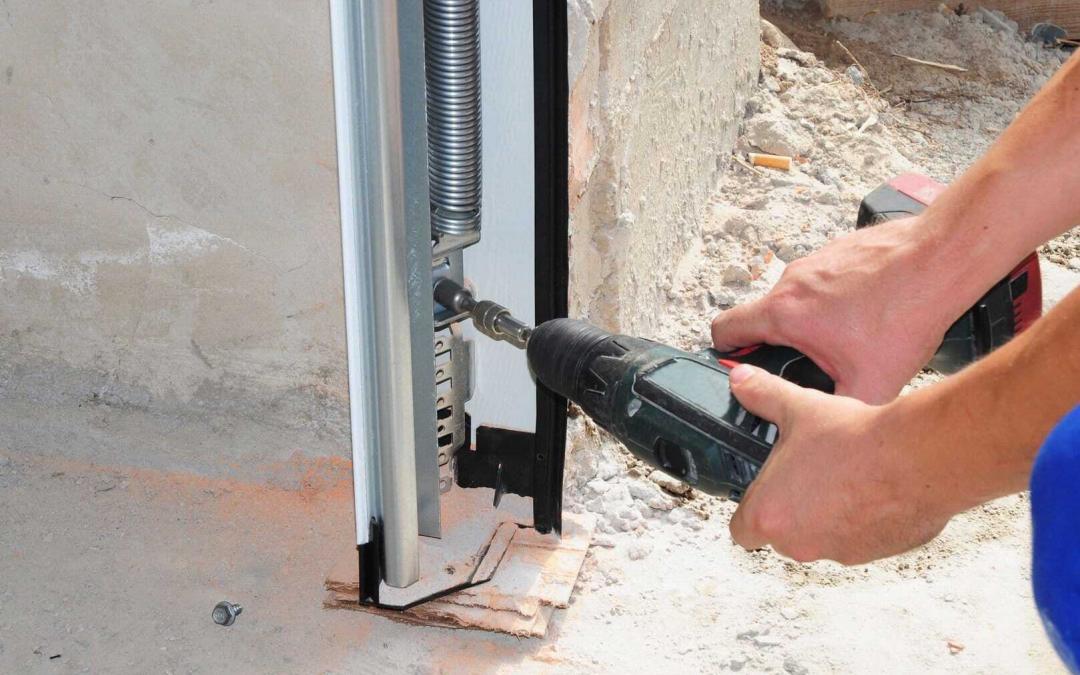When it comes to spring cleaning, we’re talking about more than the time of year. Nope. We’re talking about your garage door springs. You know how it goes. You pull into your driveway after a long day at the office only to find that the door won’t open when you use your remote. All you want to do is get inside and relax, but no, your garage door won’t open. Not fun, right? It’s even worse considering you probably have no idea what is going wrong or why the garage door has malfunctioned.
In many cases, when your garage door stops working, it is usually because a garage door spring is broken. This is a very common issue; garage door repair specialists see this problem quite regularly. Why? For the simple fact that a garage door spring break – pun intended! – can happen for many reasons. Even more, a lot of the reasons why springs hit the skids (say that five times fast) relate to a lack of maintenance. These small mechanical devices play a big part.
Top Reasons Garage Door Springs Break
Come on! You want to get your garage door open and into the relaxing Lazy-Boy when you click the button. So, let’s get into the big reasons why a garage door spring might decide, enough is enough!
Simple Wear and Tear
The main reason most garage door springs fail, or break is the same reason most other things fail or break: time and age! Even people live within that paradigm, so why wouldn’t a garage door spring? Typically, an average garage door torsion spring will last for around 10,000 up-and-down cycles. Let’s just say you leave only one time a day. A simple once-a-day go around equates to 730 cycles per year. Obviously, you can see how those build up quickly, and most people don’t cycle their garage door almost once-a-day.
Rust Buildup
Rust is a common any of almost any mechanical component. It causes the springs to easily break and it shortens the overall lifetime of the spring. The – mechanism, if you will – that drives this reaction is the friction rust causes within the coil. Furthermore, rust weakens the spring and coil. Ohioans are no strangers to rust-related problems, and your garage door springs are not immune from them. Spring-related garage door problems can be prevented by spraying the coil with lubricant every month or so. This will not only keep it lubricated but it will prevent it from rusting.
Incorrect Components
Hey, who doesn’t love a little DIY money-saving technique? Believe us, we aren’t here to simply sell you on a garage door repair service, we also want you to know that the power is also in your hands. You too can address issues with your garage door. The problem is, if you use an incorrect spring length or wire size, you may wind up with a spring failure sooner rather than later. You might get far less than those 10,000 expected cycles. Correctly maintained and constructed garage doors should have two torsion springs, with one on each side. But if you install one long spring across the door, you may forget to take the weight of the garage door into account. One long spring is fine for a lighter door, but there will be big problems if the door is too heavy for it.
The best way to do it is to use two springs. Why? Two springs share the load wait when the garage door is raised or lowered. Using single long springs may be appropriate in some instances, one must be careful not to unnecessarily shorten the lifespan of their garage door by using the wrong springs. And although broken garage door springs are common, there is one thing that you can rest assured will keep your garage door in top condition: Proper maintenance.
Poor Maintenance
Rust and wear-and-tear will do a garage door spring in lickity split, but proper maintenance will seal the deal just as quickly. Ensure your garage door components are properly maintained and rust and spring breakage are easily prevented. Remember the 10,000 cycles per life? Maintaining the components that power your garage door is critical to its health and long-life. Just like eating well and exercising can help you live a long life, the same mindset applies to your garage door components. Garage doors need to be maintained with lubricants and should be balanced. Most people encounter garage door spring failure in the winter, so if you want to see that door open and get you inside and out of the cold, it must be properly maintained.
Do you want to know how to check your garage door balance? Simply lift it up halfway and then let it go. At this point, the garage door should be still and not move. If it falls down, even for just a bit, then you can bet the springs are beginning to wear and could be in danger of breakage. Preventative maintenance will only get you so far, however. When it comes to the damage being done, it is time to hire an expert garage door repair man!
Garage Door Spring Types
So, now you know what causes garage door spring breakage, you may want to know what you are working with when you are dealing with the problem. There are essentially two different types of garage door springs
Extension Springs
Extension garage door spring systems are mounted on either side of the garage door track. The mechanism by which they function is composed of an extending and contraction of other components of the garage door. When the garage door is in motion, extension springs work with cables and pulleys to complete the motion.
Torsion Springs
Torsion extension spring systems generally use one or two tightly wound springs. Again, it is important to remember that the size and type of the wound springs depends on the size and type of the door. Torsion springs are mounted horizontally to the wall directly above the garage door. The most common types are three-pronged supports with bearing plates at either end of the center.
Just as we talked about the importance of garage door spring maintenance in the previous section, we want to reinforce it here as well. Your garage door springs must deal with some of greatest amounts of tension throughout the cycle. Garage door springs are susceptible to the most tension when the garage door is closed. Remember, if a garage door spring breaks while the door is open, the door itself may come down on its own.
Good Health for Your Garage Door
You don’t have to take your garage door to the doctor (SEE: Garage door repair man) to fix issues when those issues can easily be fixed through preventative maintenance. Garage door springs are critical components in the proper functioning of your garage door. It’s curtains without them; curtains that won’t close, mind you.
It is far too easy to take your garage door for granted. As long as it opens, closes and looks good, what more do you need to worry about. Yet, there are few things more frustrating than when a garage door breaks down. The number of people injured in garage door accidents is not small. Preventative maintenance is critical to ensuring, not just your springs, but also your garage door remain in tip-top condition.
Whether you do it yourself or hire a garage door specialist in Northeast Ohio, you want to make sure a thorough review of your garage door’s functionality is completed. Only then can you figure out what kind of tune-up needs to be ordered up. A garage door lacking in proper maintenance can stick, lock up, or fall, and could post a serious threat to you or your family.
Beyond simply lubricating your garage door springs, you must ensure you are properly evaluating the entire system. The fact is, garage door problems usually always start with a hardware problem. If there is any major damage to your garage door or if it has been hit by a car, don’t hesitate to call a garage door professional. Otherwise, it is possible for you to complete preventative maintenance yourself. But when you don’t want to complete the maintenance yourself, worry not, Prestige Door is right here and waiting for you to contact us!

